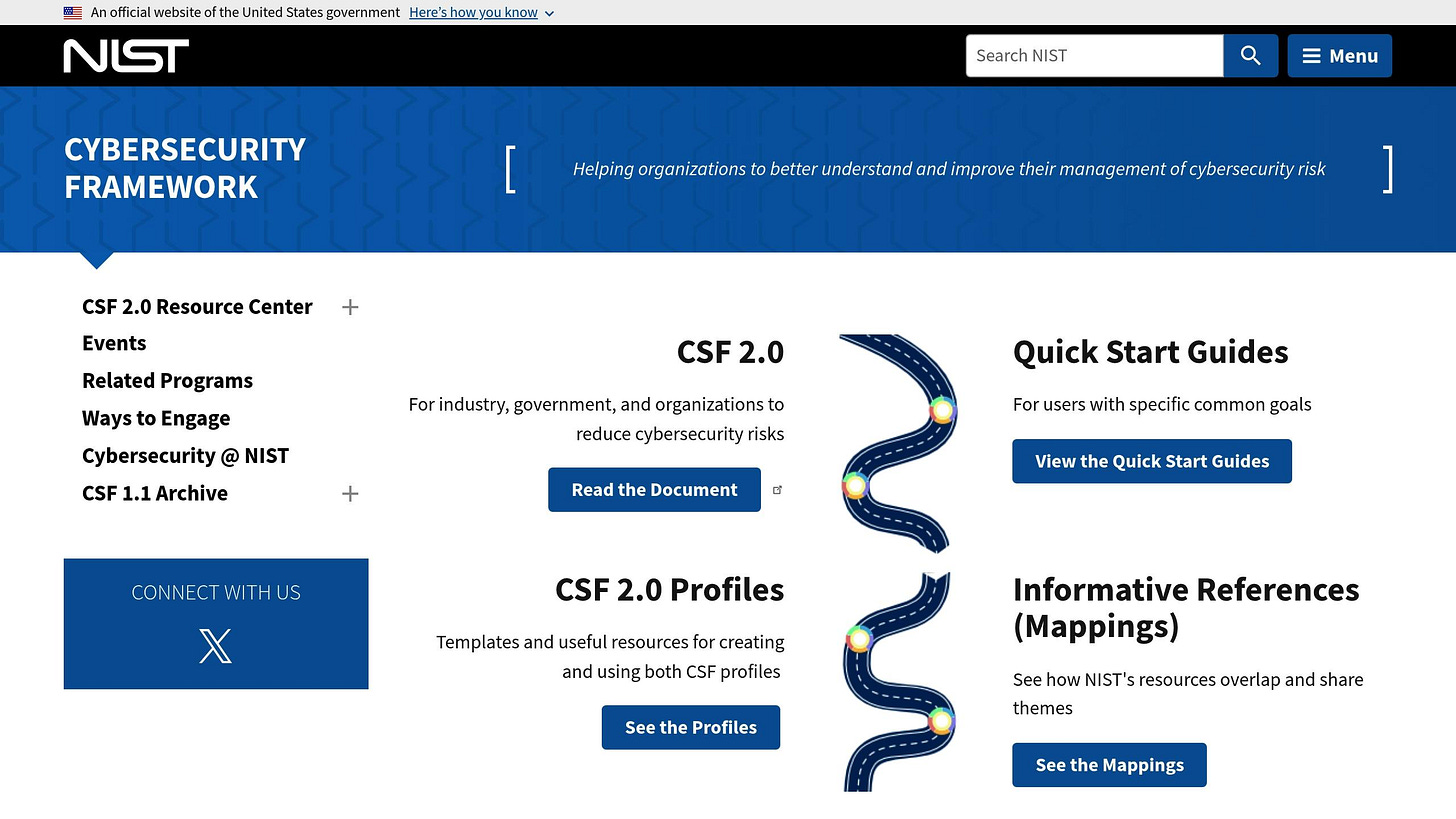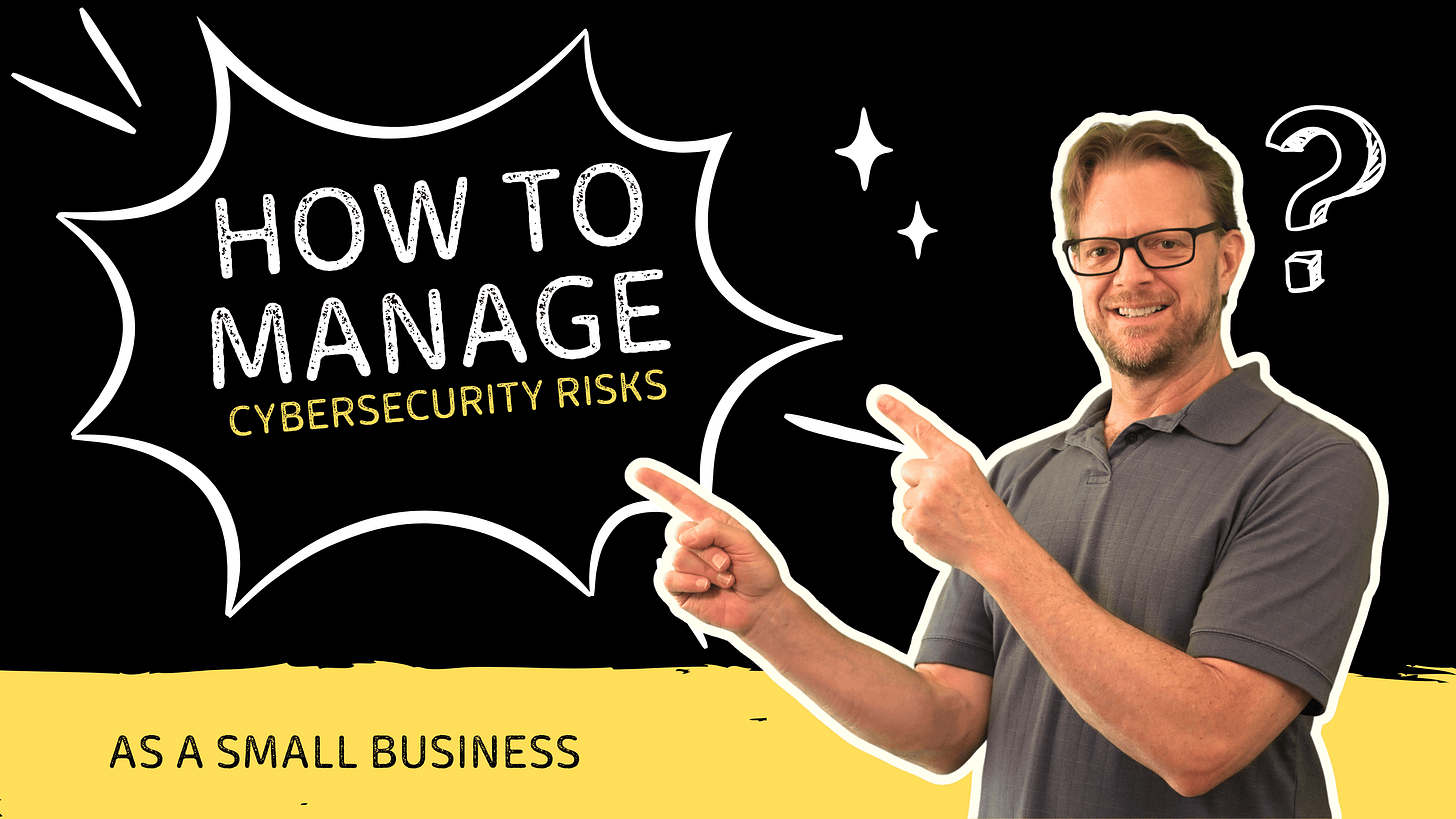How small businesses can use the NIST Cybersecurity Framework to begin managing their cybersecurity risks.
Small businesses can effectively manage cybersecurity risks using the NIST Cybersecurity Framework 2.0, which offers a practical, flexible approach.
Did you know that small businesses account for four times as many cybersecurity victims as larger organizations? Some small business owners may feel like they are not a target because of size, but the opposite is actually true. SMBs are less likely to have up-to-date systems, patching, and backups, making them a favorite target of ransomware groups. The presence of ransomware was present in 44% of all SMB breaches in 2025.1
With the average cyberattack costing between $120k and $1.24 million in 2024, small businesses have an incentive to act now to protect themselves.2
How can a small business take action and become more resilient to cyberattacks? The NIST Cybersecurity Framework (CSF) provides a straightforward and flexible approach for businesses of all sizes to manage cybersecurity risks.
Why Use NIST CSF?
The Cybersecurity Framework provides a straightforward path for small businesses to take charge of their environment, offering a customizable and budget-friendly approach.
Six Core Functions: Identify, Protect, Detect, Respond, Recover, and Govern
Customizable: Tailor it to your business size, resources, and risks.
Budget-Friendly: Utilize free tools like NIST's Small Business Cybersecurity Corner and Balanced Security’s CSF Maturity Assessment.
Quick-Start Guide:
NIST also provides a quick-start guide to get you up and running quickly:
Assess Your Security: Identify your assets and vulnerabilities.
Set Goals: Define measurable security objectives.
Develop and Implement an Action Plan: Address risks with immediate, short-term, and long-term steps.
Key Benefits:
Lower risk of attacks.
Faster recovery after incidents.
Build trust with customers and partners.
As a small business owner, we know what it’s like to keep all the plates spinning. If you need help, you can reach out to get expert guidance without hiring a full-time cybersecurity officer.
Ready to get started? Let’s dive into how the CSF can work for you.
The 6 Core Functions of CSF 2.0
Overview of the 6 Core Functions
The NIST Cybersecurity Framework 2.0 is built around six high-level functions - Identify, Protect, Detect, Respond, Recover, and Govern. These functions are essential for any cybersecurity program, enabling organizations to effectively understand, manage, and mitigate cybersecurity risks. Taken together, these functions provide a comprehensive view of managing security risk. This approach creates a stronger, more layered defense system.
One of the framework's key strengths is its ability to adapt to different organizations, regardless of size or industry. For small businesses, this means you can adjust each function to match your unique needs, resources, and risks, even without deep cybersecurity expertise. Below, we’ll explore how each function can be applied practically in small business settings.
How Small Businesses Use Each Function
Each function addresses a specific area of cybersecurity, and small businesses can implement them in practical and budget-friendly ways:
Identify: This is the foundation of your cybersecurity efforts. It involves listing critical devices, data, and systems, evaluating their current security status, and pinpointing vulnerabilities. For example, a small retail store might catalog computers, point-of-sale systems, customer databases, and Wi-Fi networks. The goal is to understand what data is collected, where it’s stored, and who has access to it.
Protect: This step focuses on implementing safeguards to reduce or prevent attacks. Small businesses can install firewalls, antivirus software, and other security tools; enforce access controls; and ensure their systems are regularly updated and maintained. Employee awareness and training are crucial in this context, as many cyberattacks exploit human errors rather than technical vulnerabilities.
Detect: The focus here is on spotting threats quickly. Small businesses can monitor network traffic and system logs for unusual activity and perform regular security assessments to find vulnerabilities. Even without an IT team, you can use automated tools or partner with a service provider to stay alert to suspicious behavior.
Respond: When a threat is detected, this function ensures there’s a plan in place to contain the damage, eliminate the threat, and keep stakeholders informed. For instance, isolating compromised accounts and verifying business-critical operations are immediate steps that can limit the impact of an incident.
Recover: After an attack, the priority is returning to normal operations. This involves having a tested recovery plan, ensuring data backups are reliable, and learning from the incident to strengthen future defenses.
Govern: This function helps you establish and monitor your cybersecurity risk management strategy, policy, and goals. Starting with understanding your legal, regulatory, and contractual requirements, you can evaluate how a cybersecurity incident could disrupt your business’s mission and assess the impact of a critical business asset loss. This process helps you begin to view cybersecurity as a business risk that needs to be managed alongside other risks, such as those related to finance, natural disasters, and competitors.
Core Functions Comparison Table
Here’s a quick summary of each function, its purpose, key activities, and the benefits it offers small businesses:
This structured approach is crucial. By implementing all six functions, you create a comprehensive plan of defense, allowing you to respond to a security incident as quickly as possible. Given that half of small businesses take more than 24 hours to resume operations after an attack, having a solid recovery plan is critical.
NIST Cybersecurity Framework 2.0: Small Business Quick Start Guide
3-Step Guide to Implementing CSF 2.0
Getting started with the NIST Cybersecurity Framework 2.0 (CSF 2.0) doesn't have to feel overwhelming. This three-step plan breaks the process into smaller, more manageable tasks. Even small businesses with limited technical expertise or budgets can follow these steps to build a strong cybersecurity foundation.
Step 1: Assess Your Current Security
Before making improvements, you need to know your current standing. Begin by conducting a gap analysis to compare your current practices with the NIST CSF 2.0 framework and identify areas that require attention.
Take inventory of your digital assets, including hardware, software, cloud services, and mobile devices. Note the essential details for each, including their type, location, and the person responsible for them. Then, map out how data flows through your systems to spot potential vulnerabilities. Classify your assets by their importance to your operations, identifying areas for improvement, such as outdated software or poor password practices. This will help you create a focused improvement plan.
Prioritizing your assets is key. Identify which ones are most critical to your business and assess their role in supporting your operations. This prioritization will guide the security objectives you’ll set in the next step. Your current cybersecurity posture is called your current profile.
Step 2: Define Your Security Goals
Once you understand your current security posture, it’s time to set clear, realistic goals that align with your business needs and available resources. The goals you set for the improvements you want to make is your target profile. Everything between your current profile and your target profile is your gap.
Your goals should be specific and measurable. For example, you might aim to update antivirus software within 30 days or train all employees on phishing awareness within 60 days. The flexibility of the NIST CSF 2.0 allows you to address your most pressing risks first and gradually expand your security efforts over time. Getting leadership involved early ensures you’ll have the support and budget required to meet these objectives.
Step 3: Develop and Implement an Action Plan
You can now develop and implement an action plan from your gap analysis. This plan should outline clear priorities, allocate resources effectively, and include detailed timelines for implementation. Focus first on addressing the most critical risks, keeping your resource limitations in mind. Begin with smaller, achievable tasks before progressing to more complex projects.
Your plan should include immediate, short-term, and long-term actions. For example:
Immediate actions: Change default passwords and enable automatic updates.
Short-term goals: Install essential security tools, such as firewalls and antivirus software.
Long-term initiatives: Develop an incident response plan and schedule regular security assessments.
Ensure that you allocate resources wisely, invest in cost-effective tools, and provide staff with training. Establish clear procedures for handling vulnerabilities and ensure everyone knows their role in maintaining security.
Cybersecurity isn’t a one-and-done effort - it requires ongoing attention. Regularly review your practices against the NIST CSF 2.0 framework to stay current with emerging threats. Establish a schedule for monitoring activities, including weekly checks of security software, monthly reviews of access permissions, and quarterly evaluations of your overall security setup.
Document any improvements you make during these reviews, as well as findings from security tests. Keep your incident response plan up to date so your team knows how to respond if an issue arises. Stay informed about new threats by subscribing to security alerts and participating in industry groups that share intelligence. Regularly revisit and update your security policies to ensure they remain effective as your business grows and evolves.
Practical Tools and Budget-Friendly Solutions
Small businesses can adopt CSF 2.0 without stretching their budgets. There are plenty of effective tools and resources available for free or at a low cost. Knowing where to find these resources and how to use them effectively can make all the difference.
Free Tools and Templates
The federal government offers a wealth of free cybersecurity resources. For example, the NIST Small Business Cybersecurity Corner offers templates, guides, and checklists specifically designed for businesses with limited IT capabilities. These materials break down complex cybersecurity concepts into simple, actionable steps that any business owner can follow.
You can also access free cybersecurity tools directly from the Balanced Security website, such as our CSF Maturity Assessment Google sheet. This tool helps you assess your business's cybersecurity posture against the NIST CSF. You can also find links to CSF 2.0 QuickStart Guide, and phishing education and guidance.
If you need help implementing these tools, Balanced Security offers expert support to simplify the process.
Conclusion and Next Steps
Small businesses face growing cybersecurity challenges, but the NIST Cybersecurity Framework 2.0 offers a clear path to tackle these threats head-on. With most small businesses experiencing cyberattacks that lead to significant financial losses, taking action is no longer optional - it’s essential. Here’s a summary of the framework’s benefits and some practical steps to get started.
Key Takeaways
The NIST CSF 2.0 simplifies cybersecurity by breaking it into six core functions: Govern, Identify, Protect, Detect, Respond, and Recover. Together, these functions create a solid defense strategy that can be tailored to your business’s size and budget.
"The Functions should be addressed concurrently. Actions that support Govern, Identify, Protect, and Detect should all happen continuously, and actions that support Respond and Recover should be ready at all times and happen when cybersecurity incidents occur." - NIST
This framework helps small businesses reduce risks, build trust with clients and partners, meet regulatory requirements, and strengthen their defenses against evolving threats. It’s also voluntary and user-friendly - NIST even provides a Small Business Quick-Start Guide to help companies with limited resources implement the framework effectively.
Adopting NIST CSF 2.0 doesn’t have to be overwhelming. Balanced Security’s virtual CISO (vCISO) services provide high-level cybersecurity expertise without the cost of hiring a full-time Chief Information Security Officer.
With our vCISO services, you’ll get strategic guidance to create a detailed cybersecurity roadmap and prioritize key security projects. We also offer ongoing support through regular assessments and recommendations to keep your cybersecurity strategy on track.
2025 Data Breach Investigations Report Small- and Medium-Sized Business Snapshot: https://www.verizon.com/business/resources/infographics/2025-dbir-smb-snapshot.pdf
https://www.mastercard.com/news/perspectives/2024/why-small-businesses-are-big-targets-for-cybercriminals-and-6-steps-to-protect-them-this-holiday-shopping-season/#:~:text=The%20average%20cost%20of%20a,we%20all%20take%20a%20hit.






